Germs, Fungi and Viruses - The Microscopic World
This week, Dr Chris and Dr Helen explore the microscopic world, finding out why diarrhoea and projectile vomiting make cruise ships the perfect culture vessel for noroviruses, and asking why fungi are so important for great tasting chocolate. Also, we look at giving yeast a sense of smell, predict the weather for a planet 63 light years away, and size up the world's smallest scales, which are capable of weighing a single bacterium. Meanwhile, in Kitchen Science, we looked at toilet seats and kitchen surfaces to see which harboured the most bacteria, and came in for a nasty surprise!
In this episode
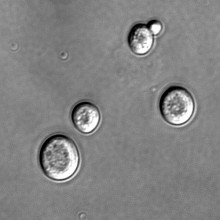
Smelling yeast an explosive combination
Scientists have made it possible for yeast cells to sniff out explosives.
Writing in Nature Chemical Biology, Danny Dhanasekaran and colleagues, from Temple University school of medicine in Philadelphia, describe how they "borrowed" the chemical smelling system from a rat and successfully inserted it into a yeast cell.
They located a receptor (a chemical docking station) that recognises a breakdown product (known as DNT) of the explosive TNT. This receptor was coupled on the surface of the yeast cell to a signalling molecule which could switch on a green coloured gene whenever the explosive chemical was picked up by the receptor. As a result, the cells would turn themselves green whenever they were exposed to TNT.
This is just proof of principle, because the same trick could be used to pick up a range of important chemicals. Detectors based on yeast like this would also be a fraction of the size of the man-made equivalent.
"This could be of immense value in the detection of environmental toxins and chemical warfare agents, even at sublethal levels," said Dhanasekaran.
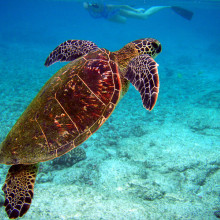
Turtle conservation could be working
Numbers of endangered sea turtles are on the up in British and French waters, thanks to conservation efforts on the other side of the Atlantic.
That's according to a team of researchers from the University of Exeter here in the UK who have been studying a hundred years worth of data on sightings of loggerhead and kemp ridley turtles in European waters.
Most of the marine turtles that visit European shores are born on the other side of the world in North America, Mexico and other Caribbean countries. After hatching the baby turtles take up to four years to swim across the Atlantic, and scientists are still not quite sure why they bother coming all this way.
Marine turtles are in a pretty bad way globally for all sorts of reasons. For a long time they have been accidentally caught in fishing nets, and also turtle eggs used to be harvested in huge numbers from beaches in the Caribbean for people to eat.
But as this latest study seems to suggest, the conservation programmes that began towards the end of the 20th century to try and protect turtles may already be paying off. For example, egg collecting doesn't happen any more and shrimp trawlers in the gulf of Mexico have begun to use devices which either stop turtles from getting into their nets in the first place, or lets them escape unharmed. And another recent study looked at glowing light sticks that you might usually see at guy fawks night or Halloween, that are used in open ocean long line fisheries to attract tuna and swordfish. It seems these lights also attract turtles which might be why so many of them are getting entangled and hooked on the long lines. The good news there is that by adjusting the colour or intensity of the lights used it could make the lights less attractive to turtles while still being effective at attracting the big fish.
All of these turtles conservation measures could well explain why we're seeing more and more turtles in the UK which 30 years ago were never seen.
So - for once we have a good news conservation story.
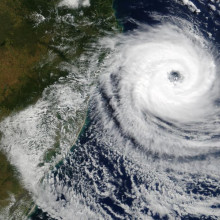
Weather forecast that's out of this world
A team of Harvard-based researchers have produced the first example of a weather forecast for a planet outside the solar system.
Writing in this week's Nature, Heather Knutson and her colleagues describe how they have used NASA's Spitzer Space Telescope to watch a Jupiter-sized planet, which is catchily named HD 189733b, orbiting its parent star 63 light years away. Unlike our own planet Jupiter, which takes 12 years to complete a lap of the solar system, this distant gas giant sits very close to its parent star and orbits every two days. But a consequence of being so close to the star is that the planet has become tidally locked, meaning that, just as our moon always shows us the same face, HD 189733b always points the same part of its surface at the star and has a dark-side looking towards outer space.
By carefully measuring the colour of the planet as it moved from being in front of the star (showing its dark side) to adjacent to the star (and showing its lit side) the team were able to calculate how hot it must be, because the brighter something is the hotter it usually is. From their measurements the researchers were able to calculate that the side facing the star was a scorching 1200 kelvin, but the real surprise was that the dark side was nearly as hot at over 900 kelvin. The team think that strong winds carry the heat from the lit side round to the dark side, because the hottest spot on the surface of the lit side lies in a direction downwind of the point on the planet's surface closest to the star.
"This is the first time we've got a glimpse of the climate of another world in another solar system," says Knutson.
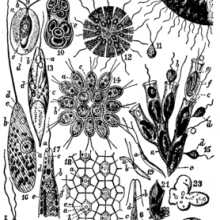
The encyclopaedia of life
This week scientists have announced plans for a wonderfully ambitious project - they are setting out to create a huge online Noah's arc. The web-based encyclopaedia will hold a huge amount of detailed information about all of the world's 1.8 million known species of wild creature, and the most important thing about is that it will be free for everyone to use.
The idea for cataloguing life on earth has been around for while, but it's only recently that it's becoming possible to do because of the great advances we're seeing in web technology, so that now millions of pieces of information can be stored, accessed and searched online. In fact the plans for the encyclopaedia of life, which will take 10 years to build, are first to send software programmes called "bots" out into the internet to gather information that's already out there about all the known species of plants, animals and fungi in the world, and then teams of experts will check it and add in any missing information as well as photographs, videos, maps and even genetic sequences.
There really will be an incredible amount of information at our fingertips. For example, the natural history museum in London will be providing access to all one million of its books and a quarter of a million research papers.
And the real key to this sort of project is bringing together all this information in one place where it will be easy to get to and navigate around, rather than having to trawl around the internet. And also, it's becoming really important to know you can trust the information you find on the internet - so the encyclopaedia of life will have the seal of approval from experts.
And of course, the 1.8 million species that have been counted so far are no where near all the species that are actually out there, so this project will continue to grow and grow as more species are discovered... we can't be sure but there could be hundreds of millions of species out there.
So from aardvark, to zebras, alligators to zebus we will all be able to find out anything we want to about all the wonderful creatures we share the planet with.

11:13 - Sizing Up the World's Smallest Weighing Scales
Sizing Up the World's Smallest Weighing Scales
with Professor Scott Manalis, Massachusetts Institute of Technology
This week, Scientists at MIT have announced that they have developed the world's smallest scales - even capable of measuring the weight of a single bacterium.
To explain how it works, we spoke to Scott Manalis, who leads the Nanoscale Sensing group at the Center for Bits and Atoms at the Massachusetts Institute of Technology.
Chris - Thank you for joining us on the naked scientists, what was the point of doing this?
Scott - Well, we wanted to have a very sensitive way to weigh bio-molecules and cells underwater for biosensors and application to biology and diagnostics.
Chris - So how does it actually work, and why can't we already do that?
Scott - Well, the scale consists of a tiny piece of silicon in the shape of a cantilever. Imagine walking out on a springy diving board, you would be bouncing up and down at some frequency. As soon as you jump off that diving board, it will vibrate much quicker. The difference in frequency between when you were on it and after you jumped off corresponds to your mass.
But imagine if you wanted to do the same thing underwater, all the water would impede the vibration of the diving board. So what we have done is to put the water inside the diving board, so we can float all the objects we want to weigh through the inside of it. On the outside is a vacuum, so the 'diving board' can vibrate very efficiently.
Chris - So the water is passing through a very tiny tube embedded inside that diving board and carrying with it the thing that you want to weigh?
Scott - Exactly, picture the tube as a U shape, and so the water flows all the way out to the end and then back out to the base again. The object, for instance a cell, would pass through that U shaped tube.
Chris - So, apart from bacteria, what sorts of things could you weigh with this and what sorts of applications would you see it having?
Scott - Essentially, we could weigh anything that could fit inside that tube down to a detection limit that's about equal to a femtogram, so 10-15th of a gram (0.000000000000001 grams!).
We envisage applications for being able to identify specific cells; for example in HIV diagnostics a very important one is to be able to count CD4 cells. We believe this has the potential to do this, although we have a lot of additional steps we must solve in the lab to be able to get there.
Chris - How do you know that there's only one cell going through at a time? How do you account for the fact that cells might stick together or clump, and a clump would weigh more than just a single cell?
Scott - There's two things we have to do; one is we make the concentration such that the cells are dilute enough that the probability of there being two in the channel at the same time is unlikely. Clumping is always a problem that one must think about and that has to be addressed by adjusting the right types of buffer conditions, the salt solution, to make sure that they don't do that. That takes some thought beforehand to know how to do that.
Chris - The human body is absolutely heaving with bacteria and not all of them are bad for us. If you have a combination of bacteria, but you're just looking for nasty bacteria, how can you be sure you wouldn't diagnose someone with an infection caused by just the good ones?
Scott - Yes, that is the key question. In fact, when we weigh these bacteria, just using the mass alone it would be very difficult to know what type of bacteria it is, so we must do more that just weigh.
There are a number of possibilities; One is to coat the interior walls of the U Tube to make them sticky with certain types of antibodies that are specific for the bacteria that you want to see, which will then stick to the tubes. You can also use nanoparticles that are functionalised with antibodies that are specific for these bacteria. These nanoparticles would then make certain bacteria heavier. Finally, we can also measure the mass density of these cells, and this may be a way to differentiate different types of bacteria or perhaps even the viability of the bacteria, but this is something we must explore.
Chris - How big is the tube that runs around the inside of the diving board-like vibrating see-saw that you described?
Scott - Right now, the way we make it it's about a few hundred microns long, so maybe 3 or 4 times the width of a hair. The thickness is between 3 and 10 microns, depending on our devices, so the thickest one we have is about the thickness of a white blood cell.
Chris - But that's still significantly bigger than a bacterium, so will your machine be fooled if the bacteria goes around the corner and ends up further towards the outside edge of the tube than towards the inner edge, would that not cause a considerable error in your measurements.
Scott - Yes, absolutely, that would cause an error, but the error is very small because of the dimensions of the 'diving board' the error in that is actually very small, and works out to not be significant.
Chris - And finally Scott, how much does E. coli weigh, per bacterial cell?
Scott - Good question, it weighs 100 femtograms. Another way to think about this is it's the weight of a gold particle that's only a few hundred nanometers in size.
Chris - So how many zeros after the decimal point before you get to some numbers for the E. coli weight?
Scott - Well, in grams, you would need to have 13 zeros after the decimal point, so 10-13 g or 0.00000000000001 grams would be the weight of a single E. coli cell.
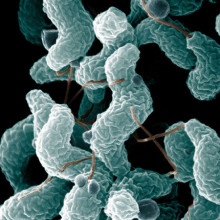
16:59 - Science Update - Bacteria and You
Science Update - Bacteria and You
with Chelsea Wald and Bob Hirshon
Bob - This week for the Naked Scientists, we're going to get up close and personal with bacteria. In fact, you're up close and personal with bacteria all the time, so it's important for scientists to figure out just how we interact with them. I'm going to talk about how bacteria could help with asthma, but first, Chelsea's here to tell us about your first line of defense against harmful bacteria--skin.
Chelsea - If the common staph bacterium could easily get through your skin, you'd wake up every day with disgusting sores. Now new research identifies a key agent in repelling this menace. Donald Leung's team at the National Jewish Medical and Research Center in Denver found that skin cells make a protein called human beta defensin-3 as soon as they notice harmful bacteria. The protein breaks down the bacteria's membranes, killing them. Then the skin cells encase and digest the bacteria's remains.
Donald Leung (National Jewish Medical and Research Center): It literally happens in minutes and is probably the reason why most normal people do not have problems with bacterial infection even though our environment is teeming with bacteria.
Chelsea - Leung says a deficiency in beta defensin-3 could help explain infection-prone skin and open a new direction for antibiotic drug development.
Bob - Thanks, Chelsea. A common stomach infection called Helicobacter pylori may protect against childhood asthma and allergies. This according to a new study led by microbiologist Martin Blaser, chair of the New York University Department of Medicine. Blaser says that Helicobacter infections have been almost universal in humans for thousands of years. But in the 20th century, the infections started disappearing, probably because of the widespread use of antibiotics.
Martin Blaser (New York University): So, as a result, we now have people - I think for the first time in human history - adults, who either have the organism or don't, and so we can measure the consequences.
Bob - The bug has already been shown to have both costs and benefits to the gastrointestinal tract. Now, Blaser's team has analzyed the medical records of about 8,000 people, and found that those with Helicobacter infections are 40 percent less likely to ever have had childhood asthma or allergies.
As to why, Blaser suspects that a chronic Helicobacter infections keeps the immune system occupied, reducing the likelihood that it'll go haywire over pollen or cold air. This is a variation of the so-called hygiene hypothesis: that by eliminating germs with our arsenal of disinfectants, we're leaving our immune systems with nothing to do, so they attack the wrong things. But Blaser suspects that the germs in our bodies matter a lot more than those on our kitchen counters.
Blaser - When a parent takes their child to have their ear infections treated, I think that one of the hidden consequences of antibiotic use is that it's having an effect on bacteria all over the body, including in some kids, eliminating Helicobacter. So it is possible that any time a child gets a course of antibiotics for any reason, they are marginally increasing their risk of asthma.
Bob - The next step is to find out if people who take more antibiotics during their childhood are more likely to develop asthma or allergies than others.
Chelsea - Thanks, Bob. Next time, we'll be back with more stories for your pleasure and that of your resident bacteria. Until then, I'm Chelsea Wald...
Bob - ...and I'm Bob Hirshon, for AAAS, The Science Society. Back to you, Naked Scientists...
Do suncreams reduce the energy of each UV photon?
There is a chemical in suncream that interacts with, and soaks up, ultraviolet light (the component of sunlight which is known to be linked to skin cancer because it damages DNA.). It then re-radiates the energy in a less harmful form.It works in a similar way to a striplight or a TV screen. The phosphor on the front of a CRT television screen is hit by a high-energy beam, which causes atoms in the phosphor to jump up to a high energy 'excited' state. When these electrons fall back down to a low energy state, they spit out some radiation as visible light.The same thing happens in suncream; the chemical absorbs the UV radiation, electrons jumps to an excited level and fall again. As they fall, they release the energy in a different part of the electromagnetic spectrum, a part that is not viewed as harmful, usually heat or infrared radiation.
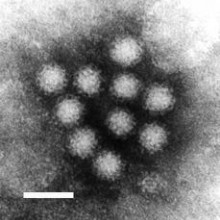
23:26 - Noroviruses - A Cruise Ship Owner's Nightmare
Noroviruses - A Cruise Ship Owner's Nightmare
with Dr Tim Wreghitt, Addenbrookes Hospital
Noroviruses have been receiving media attention recently after causing a major outbreak of illness on amongst passengers and crew alike on the Queen Elisabeth II cruise ship in January. Dr Tim Wreghitt, consultant virologist at Addenbrookes Hospital in Cambridge, came to the studio to let us know the extent of the problem. Chris - As a Consultant Virologist, norovirus must be a major problem for you.Tim - It certainly is. Every year we see major outbreaks of diarrhoea and vomiting throughout England, some years we have more, some less. That's largely to do with whether or not 'there's a new strain going around' as they say.Chris - So what actually is norovirus, and why is it such a problem?Tim - Well norovirus is a small RNA virus which originated, or was first discovered in a town called Norwalk in Washington state.Chris - So nothing to do with Norway?Tim - No, and nothing to do with "Nor-a-lorravirus", Cilla Black is completely blameless. The virus was known as Norwalk virus originally, and is now known as Norovirus officially. It's really very common in the community.Chris - So how does it actually spread from one person to the next? Does it come to us from animals? What sort of problems does it cause?Tim - The biggest problem with Norovirus is it causes projectile vomiting. I shouldn't have to say more about that, many of you have probably experienced it too, I know I certainly have. You have no warning that you're going to be sick at all; Someone goes "Bleugh" and they're sick, they didn't know they were going to do it and wherever they are, be it a hospital ward, a school, a cruise ship, that's it. That means their whole environment around them, for about 10-20 feet, is contaminated and all you can do then is to try and cope with that contamination.Chris - Is it just on surfaces, or is the air littered with these tiny viral particles so anyone standing in that blast zone could breathe it in.Tim - Yes, the air is contaminated with 'bounce-backs' and particles, but the most important problem is that it gets into carpets and curtains and all that kind of thing. This is one of the reasons why we don't like a lot of carpets and curtains in hospitals, they're very difficult to decontaminate as you literally have to take them all down, clean them and then put them back.Chris - How long does the virus stay in the environment?Tim - In the air, for very short periods of time. It settles down into the carpet and onto the walls, but then once it's settled it will stay there for a long time, which is why you simply have to remove it.Chris - So that's the only way to clean it up?Tim - Yes.Chris - So could you just talk us through what would be the scenario; You're running a cruise, lots of people join your boat at Portsmouth, very excited about their holiday... What would happen next?Tim - The interesting thing about cruises is that they're ideal culture vessels for viruses, because you have a new lot of humans coming in every week or 2 weeks and one group gets it, contaminates the area, so the next group gets it... It's fantastic for viruses.Chris - So what's the time scale? Are you going to see people beginning to get sick 2 days after you set sail?Tim - First of all, you need someone who's incubating the infection, they will come on board and be sick in a public area. "Bleugh!" And then whoever is in that area will be contaminated. Not only do you have the original area of the ship that 's contaminated, which will stay an area where people can pick up infection for many days, but then a day or so later those exposed people will contaminate other areas. It's just amplifying the whole time.Chris - So why aren't we all having this all the time? If it's as infectious as that, as easy to catch as that and as nasty as that, why aren't we all continuously having this?Tim - Well, you know Chris a lot of people listening will have probably had this in the last year or two. I've had it just last December, and knowingly twice in my life. I think if you talk to people they will know of a hospital ward or a school outbreak... I think there is quite a bit there in the community, in households as well as in hospitals. One thing I do want to say, is despite criticism of hospitals, it's very difficult once it gets into a ward. The only thing you can do is batten down the hatches, restrict access and try and remove symptomatic patients from asymptomatic patients, and then clean very carefully afterwards.This is happening in households throughout the country all the time.Chris - So if I brought this home, would my family automatically catch it? What could I do to make sure the rest of my family didn't catch it?Tim - Well it's the old adage of hand washing, largely. A lot of infections are spread by hands. All you can do if you are having diarrhoea and vomiting is to try and use, if you have the luxury, a second toilet, or be very careful how you clean the toilet, particularly the lavatory seat. Generally try to decontaminate the environment and keep other family members away from you if you can. It's easier said than done, and usually it's not possible. Even if you're very careful, you'll often find that a whole family will go down with this thing.Chris - And once you've had it, are you then immune, or are there lots of different types? Does it change so other people can catch it?Tim - There are a few problems here; once you've had it, you're only immune for a few months. Equally the virus, like the influenza virus, is very clever; the RNA mutates so that every year or two a brand new virus will emerge that no one is immune to. This virus has got it sussed. It will make sure that it's got a life span forever; mutating slightly, infecting a new group of people... It's like influenza, it's very difficult to get rid of unless you have a vaccine and we don't have a vaccine against norovirus.
Chris - As a Consultant Virologist, norovirus must be a major problem for you.Tim - It certainly is. Every year we see major outbreaks of diarrhoea and vomiting throughout England, some years we have more, some less. That's largely to do with whether or not 'there's a new strain going around' as they say.Chris - So what actually is norovirus, and why is it such a problem?Tim - Well norovirus is a small RNA virus which originated, or was first discovered in a town called Norwalk in Washington state.Chris - So nothing to do with Norway?Tim - No, and nothing to do with "Nor-a-lorravirus", Cilla Black is completely blameless. The virus was known as Norwalk virus originally, and is now known as Norovirus officially. It's really very common in the community.Chris - So how does it actually spread from one person to the next? Does it come to us from animals? What sort of problems does it cause?Tim - The biggest problem with Norovirus is it causes projectile vomiting. I shouldn't have to say more about that, many of you have probably experienced it too, I know I certainly have. You have no warning that you're going to be sick at all; Someone goes "Bleugh" and they're sick, they didn't know they were going to do it and wherever they are, be it a hospital ward, a school, a cruise ship, that's it. That means their whole environment around them, for about 10-20 feet, is contaminated and all you can do then is to try and cope with that contamination.Chris - Is it just on surfaces, or is the air littered with these tiny viral particles so anyone standing in that blast zone could breathe it in.Tim - Yes, the air is contaminated with 'bounce-backs' and particles, but the most important problem is that it gets into carpets and curtains and all that kind of thing. This is one of the reasons why we don't like a lot of carpets and curtains in hospitals, they're very difficult to decontaminate as you literally have to take them all down, clean them and then put them back.Chris - How long does the virus stay in the environment?Tim - In the air, for very short periods of time. It settles down into the carpet and onto the walls, but then once it's settled it will stay there for a long time, which is why you simply have to remove it.Chris - So that's the only way to clean it up?Tim - Yes.Chris - So could you just talk us through what would be the scenario; You're running a cruise, lots of people join your boat at Portsmouth, very excited about their holiday... What would happen next?Tim - The interesting thing about cruises is that they're ideal culture vessels for viruses, because you have a new lot of humans coming in every week or 2 weeks and one group gets it, contaminates the area, so the next group gets it... It's fantastic for viruses.Chris - So what's the time scale? Are you going to see people beginning to get sick 2 days after you set sail?Tim - First of all, you need someone who's incubating the infection, they will come on board and be sick in a public area. "Bleugh!" And then whoever is in that area will be contaminated. Not only do you have the original area of the ship that 's contaminated, which will stay an area where people can pick up infection for many days, but then a day or so later those exposed people will contaminate other areas. It's just amplifying the whole time.Chris - So why aren't we all having this all the time? If it's as infectious as that, as easy to catch as that and as nasty as that, why aren't we all continuously having this?Tim - Well, you know Chris a lot of people listening will have probably had this in the last year or two. I've had it just last December, and knowingly twice in my life. I think if you talk to people they will know of a hospital ward or a school outbreak... I think there is quite a bit there in the community, in households as well as in hospitals. One thing I do want to say, is despite criticism of hospitals, it's very difficult once it gets into a ward. The only thing you can do is batten down the hatches, restrict access and try and remove symptomatic patients from asymptomatic patients, and then clean very carefully afterwards.This is happening in households throughout the country all the time.Chris - So if I brought this home, would my family automatically catch it? What could I do to make sure the rest of my family didn't catch it?Tim - Well it's the old adage of hand washing, largely. A lot of infections are spread by hands. All you can do if you are having diarrhoea and vomiting is to try and use, if you have the luxury, a second toilet, or be very careful how you clean the toilet, particularly the lavatory seat. Generally try to decontaminate the environment and keep other family members away from you if you can. It's easier said than done, and usually it's not possible. Even if you're very careful, you'll often find that a whole family will go down with this thing.Chris - And once you've had it, are you then immune, or are there lots of different types? Does it change so other people can catch it?Tim - There are a few problems here; once you've had it, you're only immune for a few months. Equally the virus, like the influenza virus, is very clever; the RNA mutates so that every year or two a brand new virus will emerge that no one is immune to. This virus has got it sussed. It will make sure that it's got a life span forever; mutating slightly, infecting a new group of people... It's like influenza, it's very difficult to get rid of unless you have a vaccine and we don't have a vaccine against norovirus.
Can bramble and coal dust help with e.coli?
You've probably heard of pro-biotic products, usually yoghurt drinks, which actually contain live bacteria that are said to influence the bugs that live in your intestines. There's also a parallel effect called a pre-biotic effect, based on the idea that the food you eat is also the food that your gut bacteria eat. So if you eat certain foods yourself, it's said to influence the spectrum of bacteria that live in you.It's possible, although we don't have any evidence either way, that there might be something in the bramble that's influencing the digestive system of the pig and therefore affecting the kinds of bacteria they can carry. (Coal contains carcinogenic compounds, so is probably not a good thing to eat). If you eat a lot of porridge, that's very rich in beta glucans, which is very good for encouraging certain types of micro-organisms, said to be good bacteria, which contribute to warding off illnesses.
You can read more about probiotic products here.
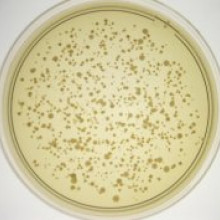
33:10 - Kitchen Science Bacteria Challenge - Kitchen vs Toilet
Kitchen Science Bacteria Challenge - Kitchen vs Toilet
with Gillian Fraser, University of Cambridge
Ben Valsler met up with Gillian Fraser, from the department of Pathology at Cambridge University, to explore the bacteria in kitchens and in toilets.
Ben - For Kitchen Science this week, we decided to do something a little different, so really it's not kitchen science as much as it is kitchen and toilet science. I'm afraid this is one that you can't do at home, but what we've decided to do is see if there's any truth in the story that there are more bacteria on your kitchen work surface than there are on your toilet seat. I met up with Cambridge University bacteriologist Gillian Fraser to see how we could test this out.
Gillian - So when we met a few days ago in a rather nice toilet, what we planned to do was to take some samples from the toilet seat. We were then going to inoculate these samples onto some growth media that would allow us to grow the bacteria that were present on the toilet seat.
Ben - So we took two swabs, which are rather like a long cotton wool bud, and we've rubbed on over a toilet seat and one over a kitchen work surface. And then by inoculating you mean to rub the swab over some agar in a little dish and see what grows on it?
Gillian - Yes, so some of the bacteria picked up on the swabs would definitely be able to grow on this media, as you can see if we look at the plates we've got lots of individual bacterial colonies growing.
Ben - So what exactly are bacteria?
Gillian - Well bacteria are single celled organisms and they're in our environment everywhere, they're pretty ubiquitous. Many bacteria are found on plants, animals and of course, you and me.
Ben - I've heard that actually there are more bacterial cells inside me than there are human cells; how does that happen, why am I not ill?
Gillian - that's true, we actually carry many bacteria on our skin surfaces, also in our guts there are a huge number of bacteria. These bacteria live together with us as commensals; under normal circumstances they don't cause us any damage. In fact they're very good for us and can actually protect us from bacteria that cause disease. So by colonising our surfaces, they can prevent the bad bacteria from being able to stick to those surfaces and grow.The bacteria that cause disease are actually quite similar in many respects to the good bacteria. However these bad bacteria have acquired traits that enable them to damage the cells in our body, to for example release nutrients from our cells that can help the disease causing bacteria to grow. So for example, they might produce a toxin that lyses (bursts) the cells in our bodies.
Ben - So the good bacteria have evolved to get the nutrients they need through working with us, but the bad bacteria get the nutrients they need by taking advantage of our cells, breaking them up and taking what we have?
Gillian - That's exactly right. Another difference is that our body normally will not raise an immune response, will not try to kill off, the good bacteria normally associated with us. But when a new bacterium, a pathogenic or disease causing bacterium comes along, the body will try and clear it by generating antibodies, and suchlike. This immune response is also a way that damage is indirectly caused during a bacterial infection.
Ben - So do antibiotics kill off all bacteria regardless of whether they're good or bad?
Gillian - Well some antibiotics have quite a specific target range of bacteria that they will kill, but other antibiotics, broad spectrum antibiotics, can kill off a wide range of different bacteria. These can include the good bacteria. In the news recently you might have seen there's an increasing problem with an organism called Clostridium difficile also known as C. diff, which can gain a foothold in your gut after prolonged antibiotic treatment has killed off your normal gut bacteria.
Ben - Which of course is very dangerous for people who are, for example, elderly, frail or suffering with another illness.
Gillian - That's right, but that's not the only problem with prolonged and widespread antibiotic use. We also see that pathogenic bacteria can become resistant to antibiotics, and this of course is a huge problem, everybody's heard about Methicillin Resistant Staphylococcus aureus.
Ben - MRSA?
Gillian - That's right. A big problem now in hospitals.
Ben - So the plates that we have here, one from our kitchen and one from our toilet seat. I can see from here that one of them clearly has a lot more speckled patches on it than the other one, which looks fairly clean really. Which one is which?
Gillian - So the one with lots of bacterial colonies on it came from, not surprisingly, the toilet seat. It looks like there's roughly about 5 times as many bacterial colonies have grown up on this plate compared to the plate where we inoculated the sample from the kitchen.
Ben - Can we look a bit further into this and see what sorts of bacteria we're getting?
Gillian - I was able to take some of the individual colonies from these plates and sub-culture them, which means to plate them out again onto different types of growth media which can select for the bacteria that would normally survive within your gastrointestinal tract, in your intestines. Both of them have an important ingredient, bile salts, which would normally kill most bacteria except things like E. coli, which is normally found in your gut, and also pathogens like Salmonella and Shigella.
Ben - The plate you've used for the original cultures is just a pale yellow colour, I think most people will have seen an agar plate that looks like that. One is almost a tobacco stain dark orange, whereas the other one is quite a rich green. Are these colours here to tell us anything or is that just the colour they are?
Gillian - No, they actually tell us something. The thing that gives the plates the different colours are pH indicators. We put pH indicators in to tell whether the bacteria can use certain sugars that are in the plates as foods, because this can allow us to differentiate, to tell apart, different kinds of bacteria. So E. coli would give you lovely dark red colonies, whereas salmonella would give you pale yellow to orange colonies.As you can see from our loo seat sample, colonies have grown on our selective agar, so we know that probably we've got some enteric bacteria in here (bacteria which can survive inside your intestines). We also know by looking at what colour the pH indicators have gone (so what colour the colonies are) that these bacteria don't ferment lactose. We know they're not E. coli, they're not enterococci or enterobacter, which are normally found in your gut. They could be something like salmonella or shigella, which can both give you diarrhoea.

Ben - So there you go, in our test we found many more bacteria on a toilet seat than we did on a kitchen work surface, and even some indication that the bacteria that were there could survive inside your intestines.
We asked members of our forum to vote on which plate they thought was from the kitchen. You can see the results here. Kitchen science will be back to normal next week with an experiment you can try out at home. Until then though, my thanks to Gillian Fraser and goodbye from me.
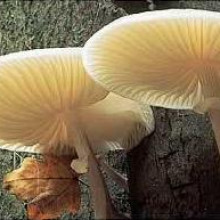
42:09 - Fantastic Fungi
Fantastic Fungi
with Dr Ali Ashby, University of Cambridge
Along with bacteria and viruses, fungi make up the fascinating myco-biological world. Here to tell us more is Ali Ashby, from Cambridge University.
Chris - So Ali, what exactly is a fungus, and how is it different from bacteria and viruses?
Ali - Fungi are fascinating organisms. They are incredibly diverse and range in size from a few microns, as expected for a bacterium, right up to being one of the largest organisms on this planet.They're incredibly diverse. They diverged from bacteria very early on. They are not plants and they are not animal, they have their own kingdom.
Chris - Are they more specialised than bacteria? Are they more like us than bacterial cells?
Ali - They have more in common with animal cells so yes they are more like us, and we clearly shared a common ancestor early on in the evolutionary time.
Chris - So what is the biggest role of the fungi in the world around us?
Ali - The biggest role fungi play is that they are one of the primary decomposers. They break down woody lignin, and without them we would have lots of trees but virtually no soil, so plants wouldn't be able to survive. One of the other things that they do is that just about every plant in your garden has a fungal association. It could be an association with the roots, mycorrhizal associations, where both the fungus and the plant benefit from that interaction. Or they could be endophytic fungi which tend to grow in the leaves of plants and don't cause any visible signs of infection, yet they are beneficial in that they prevent animal from eating the leaves and also offer some resistance to other microbes.
Chris - So what are they doing in the roots? You mentioned a clever relationship between the fungus and a plants roots, so what's happening there?
Ali - The root structure for plants can only extend so far into the soil. There are different types of mycorrhizal fungi and these are the endomycorrhizal fungi and the ectomycorrhizal fungi. The endomycorrhizal fungi associate very closely with the roots of a plant, they actually get inside the outer surface of the plant and extent their hyphae much further than the roots of the plant.
Chris - So it's like a system of roots on top of roots?
Ali - That's right and so they get the nutrients that the plant is finding hard to get hold of like phosphorus and zinc. In return the plant gives the fungi the sugars that result form photosynthesis, so it's a mutualistic interaction.
Chris - So if I was to zoom in on a fungus, what would it actually look like?
Ali - Well if you could imagine the London Underground it's a little like that. It's a vast cotton wool network of hyphae, hollow tunnels like the underground that extend out and spread into the substratum. Fungi are like animals, and not like plants that can make their own food from external sources of energy but, like us, fungi actually have to utilise pre-made organic material. So they send out their hyphae and produce special enzymes that are released into the food source. They then digest the food and absorb the nutrients back into the cotton wool hyphal strands.
Chris - You mentioned that they are one of the largest organisms on Earth, so how big is big?
Ali - The latest measurement on Armillaria galica in Oregon, USA, was 3.6 miles, and that's just one organism! The mycelium is spread an incredible distance, and so it could arguably be the largest organism on this planet.
Chris - We now see fungi as a useful food source not just for breaking down wood but also for us to eat, to turn into marmite and things like that.
Ali - That's right, you'd be absolutely amazed if you look at the food industry. Next time you go to the supermarket just look at what you have in your shopping basket. Fungi help in the production of bread, wine, beer, Marmite, soy sauce, cheeses and even chocolate! Fungi play an incredible role both in the way the chocolate plant grows and also fungal fermentation makes the chocolate taste good.
Chris - So it's not just making the plant grow well?
Ali - No, it's actually a different fungi. The endomycorrhizal fungi help the root structure of the tree and allow it to grow, and then once the flowers develop, the coco pods develop. In those pods there are about 50 seeds and it's those seeds that you need for making chocolate. The seeds are surrounded by a mucilage and the fungi break down that mucilage and produce ethyl alcohol. It is at these early stages where the lactic acid is broken down to ethyl alcohol, that you get the flavour of the chocolate coming out.
Do noroviruses show the same seasonality as flu?
Yes they do. Noroviruses used to be called winter vomiting disease, because they mainly occurred in the winter. Influenza is so called because of "Influenza del freddo" - the influence of the cold in Italian,The only time you get noroviruses significantly in the summer months is when you get a new strain from an RNA mutation. More usually you get infections between October and March.






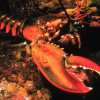

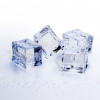

Comments
Add a comment